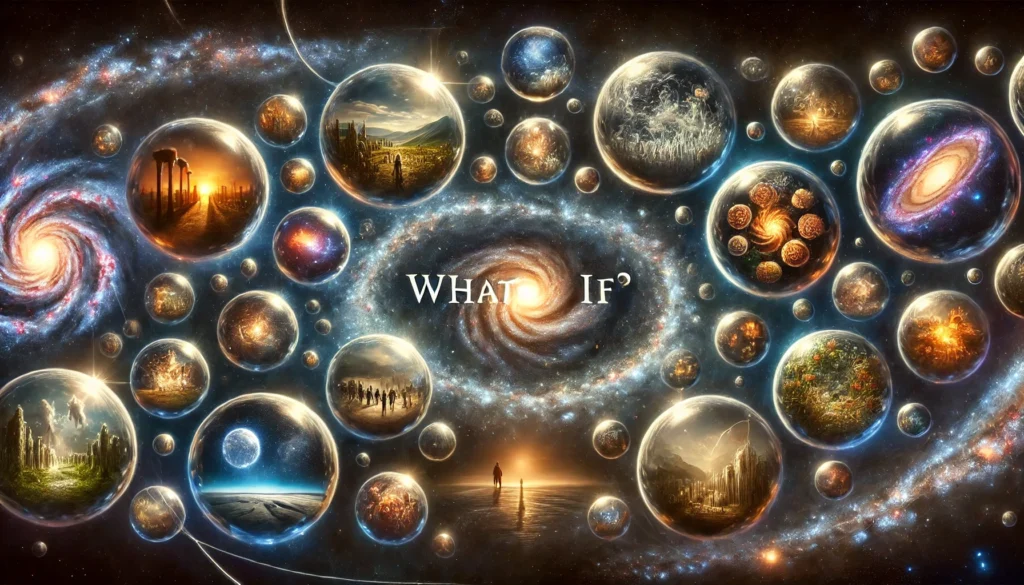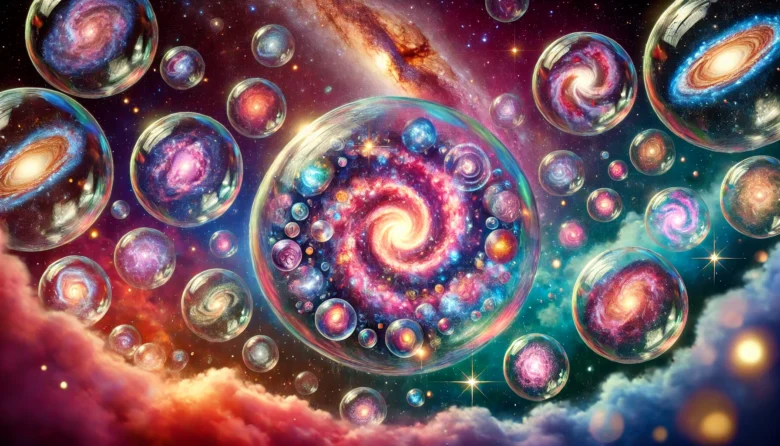Fun Fact: Did you know that in the first trillionth of a second after the Big Bang, the universe expanded faster than the speed of light? This mind-boggling phenomenon is called cosmic inflation!
The Cosmic Tale of Inflation and the Multiverse
Have you ever stared up at the night sky and wondered, What’s out there beyond the stars? Scientists have long been captivated by questions about the origin and vastness of our universe. One of the most intriguing theories in astrophysics is cosmic inflation—a process that shaped the very fabric of space-time. And it doesn’t stop there. This groundbreaking idea opens the door to the possibility of a multiverse, where countless universes might exist parallel to ours.
Let’s take a journey into the fascinating story of cosmic inflation and how it connects to the mind-bending multiverse theory.
What Is Cosmic Inflation?
Cosmic inflation is the theory that the universe underwent an exponential expansion in its infancy, mere moments after the Big Bang. Imagine a balloon inflating so quickly that in less than a blink, it grows from the size of a pinhead to larger than a galaxy! That’s essentially what happened to the universe approximately 10−3610^{-36}10−36 seconds after it came into existence.
This rapid expansion solved many of the puzzles in astrophysics, such as:
The Horizon Problem: Why is the universe so uniform in temperature, even in regions that couldn’t have exchanged energy?
The Flatness Problem: Why does the universe appear geometrically flat instead of curved?
Inflation smoothed out irregularities and stretched the universe to such a scale that it appears flat and homogeneous to us.

The Link to the Multiverse
Here’s where things get truly mind-blowing. According to some versions of the inflation theory, the process didn’t stop with our universe. In fact, inflation may be an ongoing phenomenon, creating bubble universes in a vast multiversal landscape.
What’s a Bubble Universe?
Imagine boiling water in a pot. Each bubble is a separate universe with its own unique properties. While one bubble might resemble our universe, others could have entirely different physical laws, making them unimaginable to us.
The Infinite Playground
The multiverse theory suggests that anything that can happen will happen—somewhere. In one universe, you might be an astronaut exploring the cosmos, while in another, dinosaurs might still roam the Earth.
Why Does This Matter?
The idea of a multiverse is more than just a science-fiction trope; it has profound implications:
Our Place in the Cosmos: The multiverse challenges the notion that our universe is the only one.
Physics Beyond Our Universe: By studying inflation, scientists are learning about the conditions that give rise to universes.
Big Questions: If there are infinite universes, what does that mean for fate, free will, or even the existence of life?
Real-World Connections
Case Study: The Cosmic Microwave Background (CMB)
The CMB is the faint afterglow of the Big Bang, detected by satellites like Planck (operated by the European Space Agency). It provides evidence supporting cosmic inflation, showing temperature fluctuations that align with predictions.
Simulations by NASA
NASA, the premier space exploration agency, uses advanced simulations to understand inflation and its role in forming the universe’s large-scale structure. These models also help scientists test the plausibility of a multiverse.
Challenges and Controversies
Not everyone is on board with these theories. Critics argue that the multiverse is inherently untestable, making it more philosophy than science. However, proponents counter that indirect evidence, like the patterns in the CMB, lends credibility to the idea.
The Philosophical Twist
The multiverse theory doesn’t just intrigue scientists; it captivates philosophers and writers alike. If there are infinite universes, does that mean there’s an exact copy of you reading this blog somewhere else? What does this mean for individuality and existence?
Conclusion: A Universe of Possibilities
Cosmic inflation and the multiverse theory invite us to dream big and think deeply about our place in the cosmos. While much remains unknown, these ideas are a testament to human curiosity and our relentless pursuit of understanding.
So the next time you look up at the stars, remember: our universe might just be one bubble in a sea of infinite possibilities.
Author’s Note:
The universe is vast and full of mysteries, but that’s what makes exploring it so exciting. Thank you for embarking on this cosmic adventure with me. Keep asking big questions—they’re the first step toward uncovering big answers!
G.C., Ecosociosphere contributor.
References and Further Reading:
- NASA’s Explanation of Cosmic Inflation
- Planck Satellite and CMB Discoveries
- The “Smoking Gun” For Cosmic Inflation – Difficult Run. https://difficultrun.nathanielgivens.com/2014/03/18/the-smoking-gun-for-cosmic-inflation/
- Is Belief in God Compatible With Belief in a Multiverse? Ken Ham Answers. https://churchleaders.com/news/414247-god-multiverse-ken-ham.html




